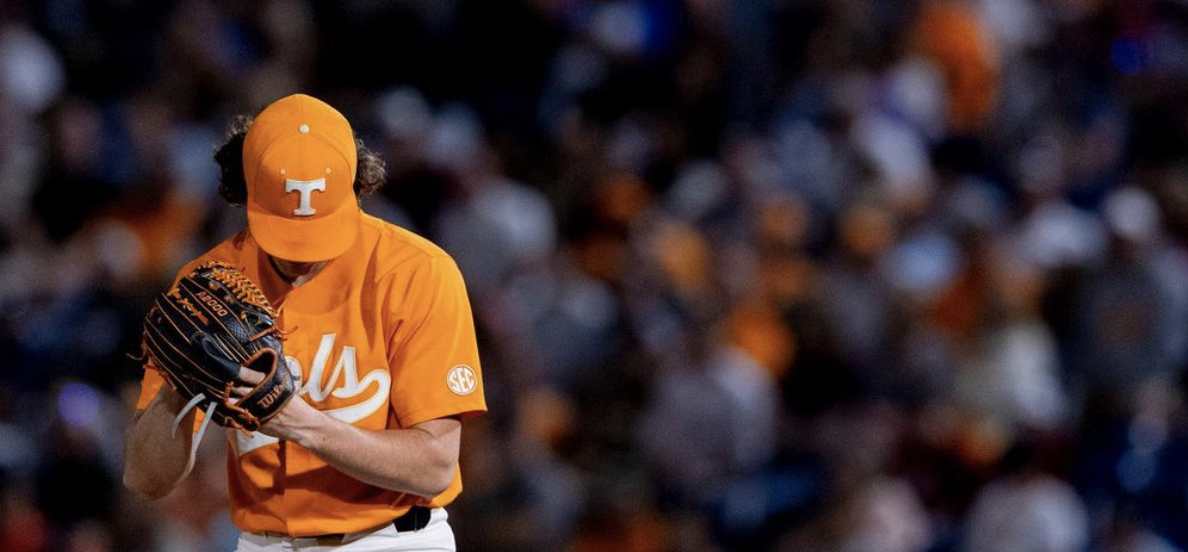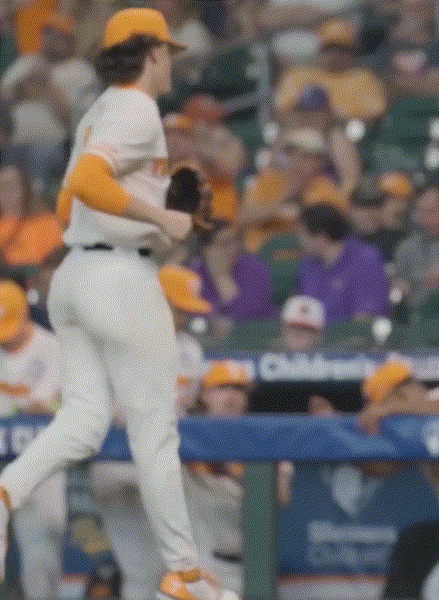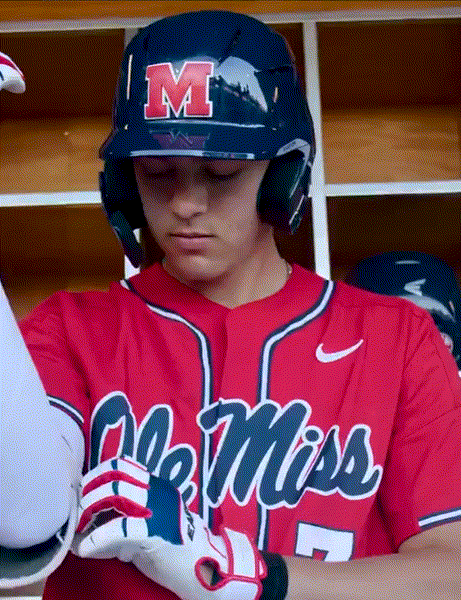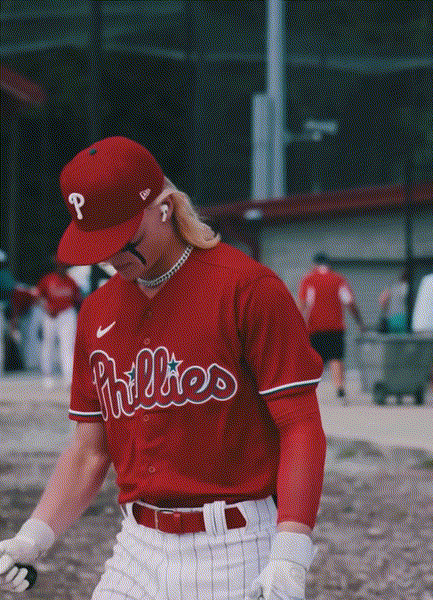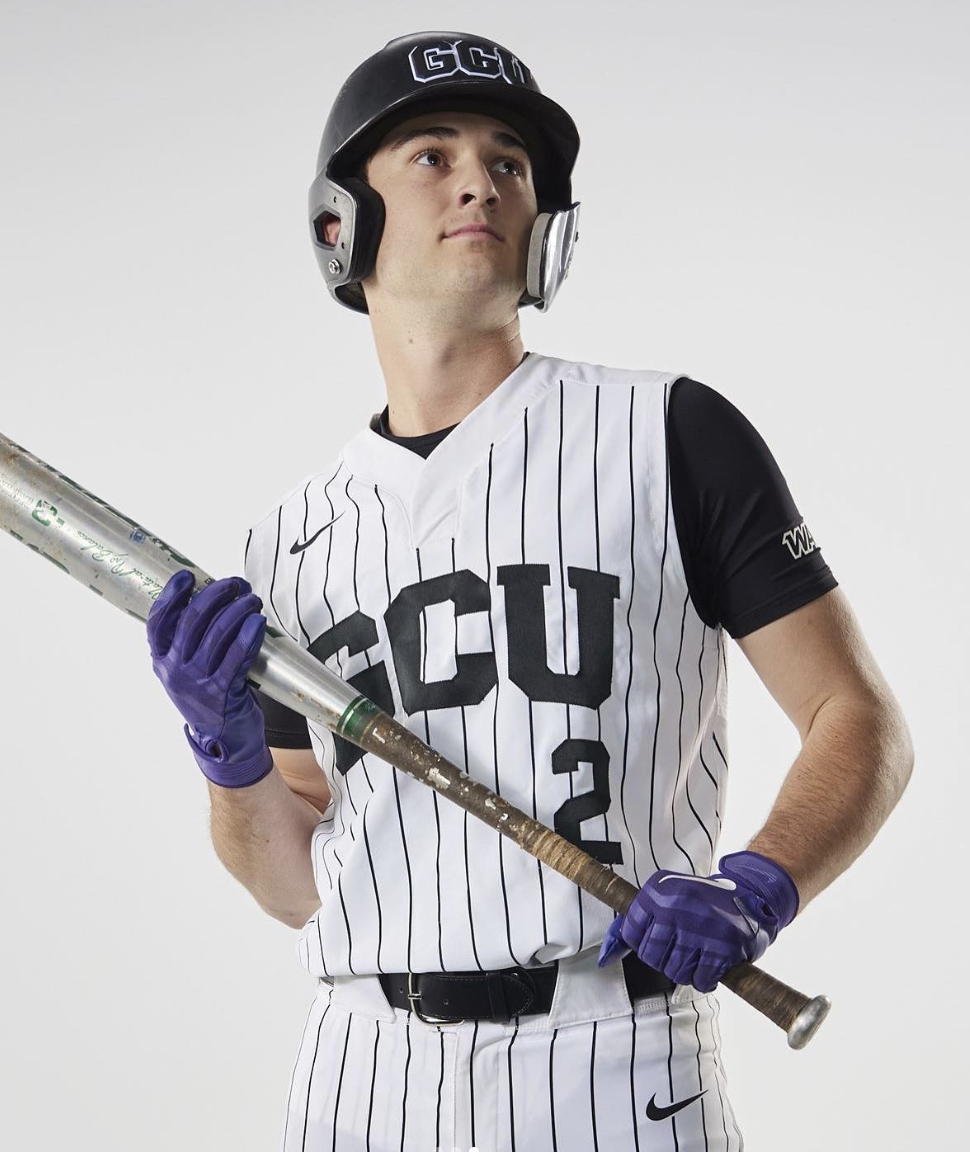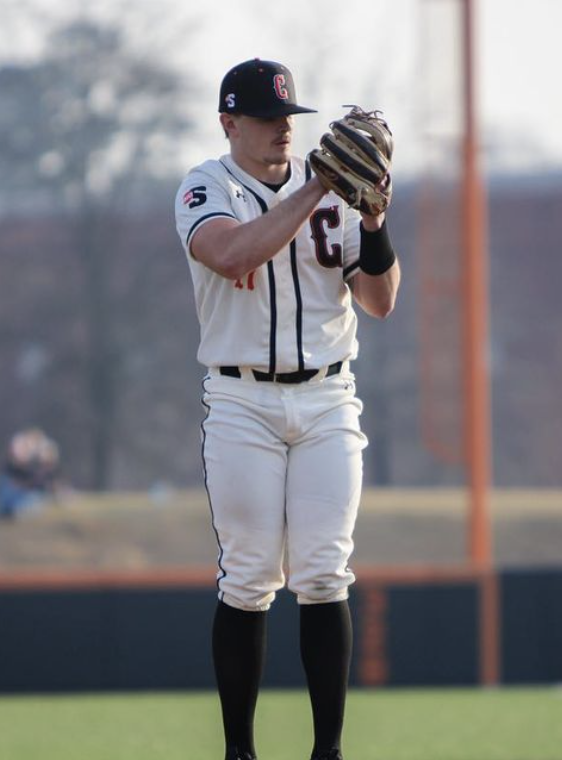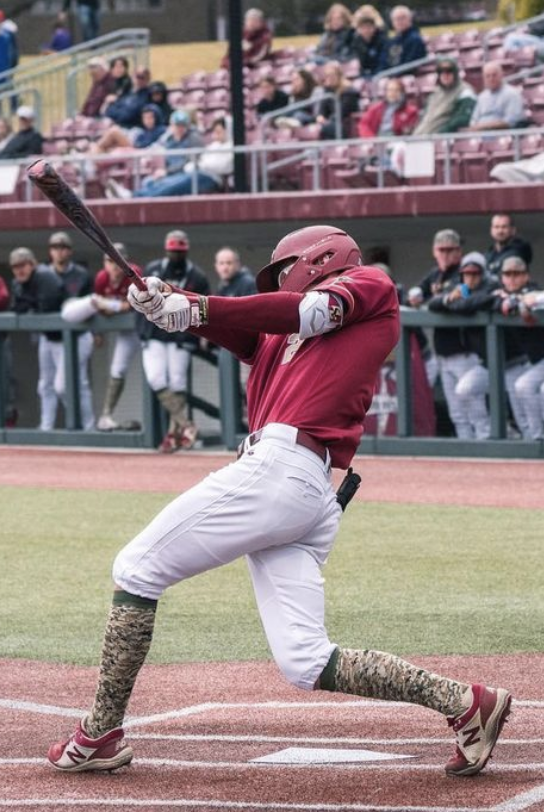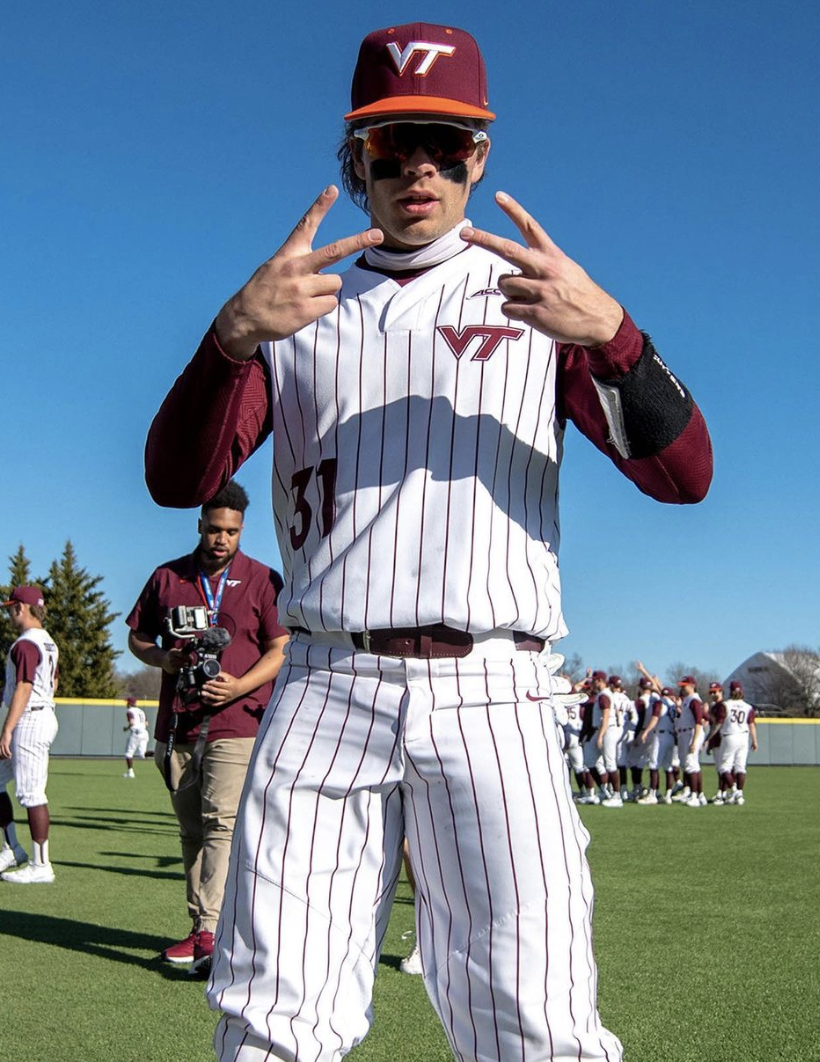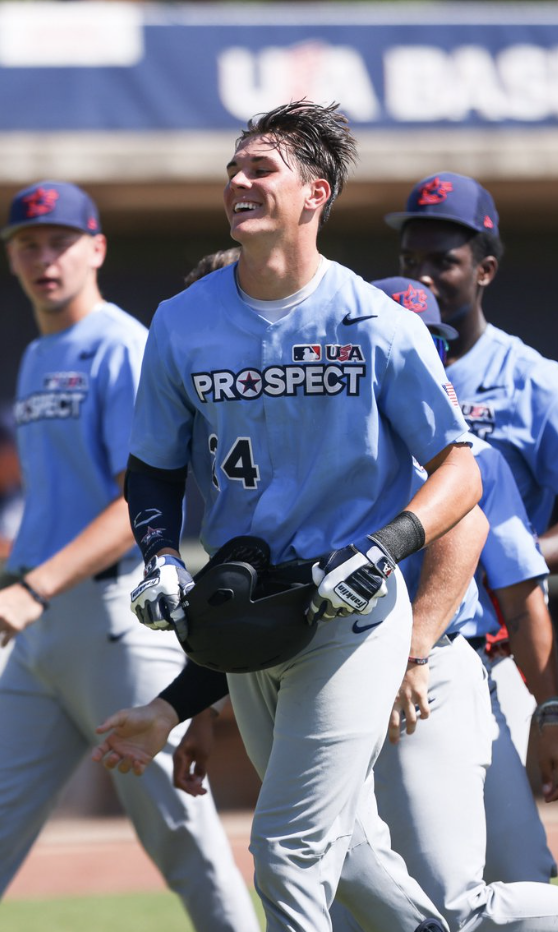2023 MLB Draft - Top 150 Prospects
A new year, a new board and new ranks. With college ball right around the corner and more industry insight at our fingertips, it’s time to dive into the top prospects for the 2023 class. As always, our boards are based on three pillars:
Our team’s Live Looks.
Trackman, Rapsodo and big data evaluation.
Conversations within the industry. What are scouting executives, cross-checkers and area scouts seeing at the ballfields?
This Top 100 really establishes a few things:
It’s another good year for college bats.
There’s some extremely unique talents on the prep ranks, specifically at the shortstop position.
High school pitching has a ways to go, though this summer is generally when the following years' arms begin to show out.
1. Dylan Crews
Outfield, LSU
Crews burst onto the scene as a true freshman, crushing baseballs, earning All-American honors almost unanimously. He carried that over into an equally impressive sophomore campaign in 2022. Crews produces elite exit velocities and balances the raw power with a strong approach and feel for the strike zone. He doesn't strike out and draws a ton of walks as well. In the field, Crews is likely destined for right field where his plus throwing arm and above average speed will be valuable assets. Crews is as close to a 5-tool talent as you’ll find in this class at the college level and could move quickly through the minor leagues given his position and skillset with the bat. He’s got a way about impacting the game in every aspect of the game.
2. Chase Dollander
Right-Handed Pitcher, Tennessee
Dollander thrived in Tennessee's rotation after transferring from Georgia Southern, posting a breakout season for Tony Vitello and the Volunteers. It's a buttery delivery with a low three-quarters arm slot and electric arm speed. The fastball is a menace up in the zone, with great vertical ride and misses bats aplenty coming out of a low-launch slot. It gets up to 99 MPH and he'll hold mid-90's throughout outings. He'll mix in a bevy of pitches, primarily a tight-spinning slider and a fading change-up in the high-80's, with a high-70's curveball mainly utilized to steal strikes early in counts. As if the pure stuff wasn’t enough, Dollander has premium command as well. There's a lot to like about this arm and he represents one of the better pitching ceilings we’ve seen in a couple years.
3. Jacob Gonzalez
Shortstop, Ole Miss
Highly regarded during his high school days, Gonzalez was never considered a big bat until he reached Oxford. He put on 20 pounds on campus and became one of the most imposing bats in the country, seemingly overnight. Gonzalez almost never strikes out, and he makes a ton of contact as well. This kid has fantastic eyes at the plate and can anchor any lineup he’s thrust into. His batted-ball values have been loaded too. Really loud. He's got juice to the pull-side and only projects to develop more as he ages and works to understand what he's capable of. Defensively, it's a solid average glove with an above average arm, though his size may ultimately shift him to third base. Gonzalez isn't a burner and probably won't be a base-stealer as a pro, but he’s a very good athlete.
4. Max Clark
Outfield, Franklin Community
Max Clark is one of the best pure high school hitters the draft has seen in recent memory. One area scout called him "The next Jarred Kelenic, with more physical upside." Clark has a fantastic feel for the strike zone and has a swing catered toward using the entire field. He's a pro hitter. Clark doesn't try to hit homers. He's a line drive machine. That said, he's really begun developing into plenty of game power and should run into 20+ homers at his peak. Clark figures to stick in centerfield where his double-plus run times and fantastic routes should age beautifully. The floor here is pretty substantial as far as prep bats go.
5. Wyatt Langford
Outfield, Florida
Langford has been an offensive force for the Gators providing plenty of punch and impact at the plate in Gainesville. This is a premium power bat with easy plus raw power to all fields. He's also a fringe-average runner, but the legs play up thanks to strong instincts and burst on the basepaths. He's destined for left field where his speed and lack of a strong throwing arm will play best. Still, this bat will be drafted for the juice. It's one of the more impactful bats available in 2023.
6. Walker Jenkins
Outfield, South Brunswick
Jenkins is long, lean, athletic, and projectable at 6-foot-3, 205 pounds, showcasing some of the best bat speed and power in the class. He’s an easy above-average runner at present with a huge arm that will play at any outfield spot. He's performed at every stop along the amateur circuit and earned a spot on Team USA 18u as an underclassman. This is one of the premier bats in the 2023 class, even if he does physically mature into a corner role when it's all said and done. We’re talking about a an impact bat that should hit for average and power, akin to the likes of Riley Greene in his hay-day.
7. Enrique Bradfield
Centerfield, Vanderbilt
Speed, speed and more speed. If Enrique Bradfield isn't the fastest player in the country, he's in the conversation. Bradfield will never been a thumper, but he's got elite vision at the plate, hardly ever expands the zone and walks just about as much as he strikes out. His frame still has room to add some muscle, so it wouldn't surprise scouts if he ended up with enough juice to run into double-digit homers at his pro peak. The story here, however, is a guy who really knows how to get on base and is a nightmare for the opposition when he runs. In the field, he's comfortably a plus defender in center with sublime routes to the ball and a comfort about his game, gliding to the spot. The profile fits somewhere between Jarrod Dyson and Kenny Lofton; a top-of-the-lineup dynamo.
8. Hurston Waldrep
Right-Handed Pitcher, Florida
Waldep transferred out of Southern Miss to Florida for his junior year after some impressive undergrad campaigns. The fastball gets up to 97 with immense hop at the top of the zone and true bat-missing qualities. The slider is thrown firm and short with late two-plane tilt that Waldrep gets hitters to chase with regularity. He's also flashed an above average changeup, though it's inconsistent both in shape and execution. Waldrep has a super-athletic frame with well-proportioned strength and a wicked quick arm. He's a true power pitcher with a bulldog mentality on the bump.
9. Thomas White
Left-Handed Pitcher, Phillips Academy
There are those that believe White is the best prep southpaw prospect available in any draft since Steve Avery was selected no. 3 overall in 1988. Better than Brien Taylor. Better than McKenzie Gore. Better than the whole lot of them. White has been a totem on the prep scouting scene since he was 13 years old. It's a whippy arm with huge projection, but already shoving gas. White has been up to 96 and many believe he'll approach triple digits when it's all said and done. He's shown feel for spinning the baseball, primarily a low-to-mid 70s curveball with tight tilt that projects. White can also pronate and turn over a changeup. At this stage, both of his secondaries are a work-in-progress, but show big promise. Given his size, his move down the mound and subsequent extension, the baseball explodes on hitters with life at the top of the zone. Skeptics do question the fastball command, however. That’ll be a big part of his development.
10. Jacob Wilson
Shortstop, Grand Canyon
Jacob Wilson has been one of the most accomplished, mature hitters in the entire country during his stay at GCU. He's got a prolific eye at the plate with an extremely advanced approach and a grand willingness to use the whole field. Wilson showcases fringe average power but many believe he'll grow into solid average pop in the pros. He's an average defender at shortstop and could comfortably move to third base or second base. Elite instincts on the field and makeup off the field, Wilson checks a ton of boxes and is a very popular figure among his peers and evaluators.
11. Cade Kuehler
Right-Handed Pitcher, Campbell
Kuehler developed extremely quickly upon arriving to Campbell. He's got a super-quick arm and natural deception that's been hell on the opposition. The fastball is already up into the upper-90s with top of the scale ride. He's really dialed in a slider/cutter that flash plus when he's got feel for it. Kuehler will need to continue throwing more strikes and ironing down the effort in his delivery as he develops and gets more college innings under his belt, but there's definitive day one upside here if the track record and production continue to impress.
12. Paul Skenes
Right-Handed Pitcher, LSU
Paul Skenes was a phenomenon for Air Force as a freshman and sophomore before transferring. While he has some two-way potential, Skenes is a more upside on the mound working from a three-quarter arm slot with smooth mechanics, a short-arm action, hiding the ball on his back hip and creating a lot of deception. Skenes’ velocity sits in the low 90s as a starter, up to 95, but can get up to 98 in relief. He generates plenty of carry on the heater, with spin rates in the 2400 RPM range. Primary secondary offerings include a fall-off-the-table split-change and a short breaking slider, both in the low-to-mid 80s. At the plate, Skenes has some contact issues but really excels at finding the barrel and has legitimate slugging potential. Evaluators certainly prefer the arm, but the two-way upside is en vogue.
13. Travis Honeyman
Outfield, Boston College
Honeyman has essentially been a steady performer throughout his college career, both on campus and in wood-bat summer leagues. A primary left fielder, Honeyman is an above average runner with high-level instincts. He's got a fringy arm, and will almost certainly stay in left field moving forward. Honeyman really began to turn heads as one of the better hitters on the Caps this past summer. It's solid-average power at the plate, mostly to his pull-side. Honeyman is a solid player in almost every aspect of the game and is a bit of a sum-of-his-parts type of player.
14. Noble Meyer
Right-Handed Pitcher, Jesuit
Jesuit HS in Portland, Oregon has become a total pitching factory. From Mick Abel to Nelson Keljo, Jesuit has a knack for developing arms. Meyer burst onto the scene during the 2022 showcase circuit with a fastball up to 98 featuring arm-side run and some ride. It's a deceptive slot that's tough to pick up too. His slider works into the mid-80s with sweeping action and short vertical tilt. Meyer offers a mid-80s changeup that lags behind his other two weapons, but shows enough promise for scouts to slap a future 50 grade on the off-speed offering. Meyer is also an impressive athlete coming from a 6-foot-5, long, lanky frame. He checks a lot of boxes.
15. Jack Hurley
Outfield, Virginia Tech
Hurley is a bit of a five-tool player who can impact the game in every aspect. He's got the hit tool and the raw power, and he's got the speed to steal double-digit bases as a pro. If there's one critique here, it may be that the throwing arm is below average, maybe a touch better than that. Hurley comes packed in an athletic frame with well-proportioned strength and organic loft built into his swing. He doesn't have to sellout for power or force things to his pull-side. He does a good job staying up the middle of the field and letting his bat speed handle the rest. Hurley has gone through occasional periods of swing-and-miss, coming almost exclusively by way of the changeup, but that's a development piece that should come as he ages. This is a big league regular bat.
16. Kevin McGonigle
Shortstop, Monsignor Bonner
McGonigle is a smaller, twitchy infielder with lightning for hands and impressive core strength at the plate. He's hit absolutely everywhere he's gone, showcasing the bat to scouting executives on a number of occasions throughout the u17 circuit. It's a compact, strong, sometimes rotational cut that creates big pound-for-pound pull-side power, though McGonigle is in no rush to sell out for the juice. This is a hitter with an advanced approach at the plate before anybody will label him a slugger. McGonigle has a loose, flashy glove with a bouncy actions on the dirt. He possesses an average arm and his feet can get short and choppy on balls his to his left and right. Some believe the profile is best suited as an impact second baseman, though proponents point to his athleticism, lateral burst and sparky actions as reasons to let him develop as a shortstop.
17. Eric Bitonti
Shortstop/Third Base, Aquinas
Bitonti offers one of the most visually appealing swings in the entire prep class. High-level hit/power combo that’s well balanced throughout as a left handed hitter and a bat path that’s conducive to all-fields power. Ultra projectable, long frame that Bitonti incorporates extremely well into both his swing and throws across the diamond showing staying power on the left side of the infield. The Oregon commit shows an immense package of tools that could end up proving to have day 1 type potential. The cherry on top? Bitonti won't turn 18 years old until December following the draft. He's incrediibly young.
18. Roch Cholowsky
Shortstop, Hamilton
In a very deep prep shortstop class, Cholowsky stands out as having some of the highest projectability out of anyone in the class. Long, athletic frame with tons of room for growth throughout with high level actions in the dirt. He’s got fantastic range moving laterally and has the arm strength to make every throw. Hands stand out with both the glove, and even more so in the bat. Extremely hitter-ish in the box with advanced barrel control and ability to use the entire field. High level profile that should only continue to get better.
19. Brayden Taylor
Shortstop, TCU
TCU's Brayden Taylor handled himself very well against the older and stiffer competition on the Cape this past summer for Falmouth after big years at TCU. Taylor has a short, simple swing from the left side with good upper body rotation and whippy bat speed. Taylor’s profile is actually carried by the bat, showcasing loud line drive and fly ball exit velocities to his pull-side. Taylor shows a keen eye at the plate, refusing to expand his zone in favorable counts and commonly walking more than he punches out. He played a bit of second base, but with good range to his right and a strong arm, he projects a more natural fit at third base if he’s forced off the shortstop position.
20. Roman Martin
Shortstop, Servite
Martin has a wide setup at the plate with explosive hands and a line drive approach. He's got plus bat speed and certainly has the ability to put one in the seats with above average raw power projection. He’s a long, lean frame and his hands really work well at the plate without any added movement. Martin has a strong arm too and may be able to stick at the position as a pro, though a shift to third base would be buoyed by the bat just fine. He’s a strong athlete with high makeup in terms of on-field instincts. For now, Martin has the range and the arm to stay at shortstop, that is without question. If he ends up at UCLA, he'll be the next in a long line of decorated infielders to come out of the program, but he's got significant interest already from scouts.
21. Blake Mitchell
Catcher, Sinton
Mitchell is a do-it-all player and the epitome of a high school star. On the mound, he's been up into the low 97 in relief with a promising slider. When he's not pitching or behind the plate, he's shown quick, athletic actions at shortstop. Some think he's got a home on the mound. Some believe he's a future power-hitting infielder. But his actions behind the plate have many believing he's a prototype backstop of the future. Mitchell, a left-handed hitting thumper, has significant raw power and feel for driving the baseball without selling out for the juice. He can get pull-happy, but has shown a willingness to use the left-center field gap. Behind the plate, Mitchell has a plus arm with upper-tier athleticism for the position. His receiving skills are impressive considering his age. Prep catchers can be a tough demographic, but Mitchell has all the building blocks of an elite-level prospect.
22. Rhett Lowder
Right-Handed Pitcher, Wake Forest
The reigning ACC Pitcher of the Year, Lowder has some of the best pitchability in the entire class. He's been into the mid-90's with the fastball, sitting in the low-90's later into starts with running life, mixing it with a good slider in the low-80's and a change-up with fading life in the mid-80's. He can pitch backwards off the slider and change-up with ease and has good command and feel of his entire arsenal. Lowder fills up the zone and has the stuff and projection to fit somewhere into the first round.
23. Tommy Troy
Shortstop, Stanford
A very well regarded prep bat, Troy built off a strong freshman campaign at Stanford with an arguably stronger summer at Wareham. With notable power for his size, Troy has shown himself capable of going out to all fields, and finds a ton of barrels. Strong eyes and quick twitch gives him the ability to make good swing decisions consistently, and it is rare to see him post poor at-bats. Troy typically takes the field at second base, and has a strong arm for the position with soft hands, smooth actions and good transitions around the bag. He'll likely be tested at shortstop for the Cardinal moving forward, but this is a definitive middle infield profile.
24. Yohandy Morales
Third Base, Miami
Morales was a popular draft name in 2020 with multiple teams having thrown money his way during the draft. He turned them down and elected to head to Miami to further his development. Morales had a very noisy swing in high school but it's quieted down considerably. He's much more direct to the ball these days without the anxious hands and feet in his load. An aggressive hitter, Morales isn't looking to walk, but he does limit his strikeouts to a reasonably healthy degree. He generates big exit velos and finds a lot of barrels, though his misses are too often dribblers on the infield. That, however, should improve with time and reps. At his best, "YoYo" does a ton of damage to the baseball and projects as a third baseman with an average hit tool, above average power, a solid average runner and a reliable glove.
25. Matt Shaw
Shortstop, Maryland
Shaw does a little bit of everything well. He's a big, strong, thick middle-infielder who could certainly stick at shortstop, though some believe he could end up at second base or third base because of his shorter strides and muscular frame. Shaw was a force in the Big 10 as a true freshman and figures to anchor the middle of the Maryland lineup for the next two years. He's got the potential to net double digit homers and stolen bases at his collegiate peak whilst developing into a Kike Hernandez type pro.

